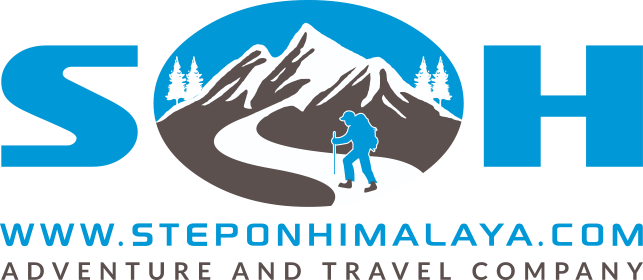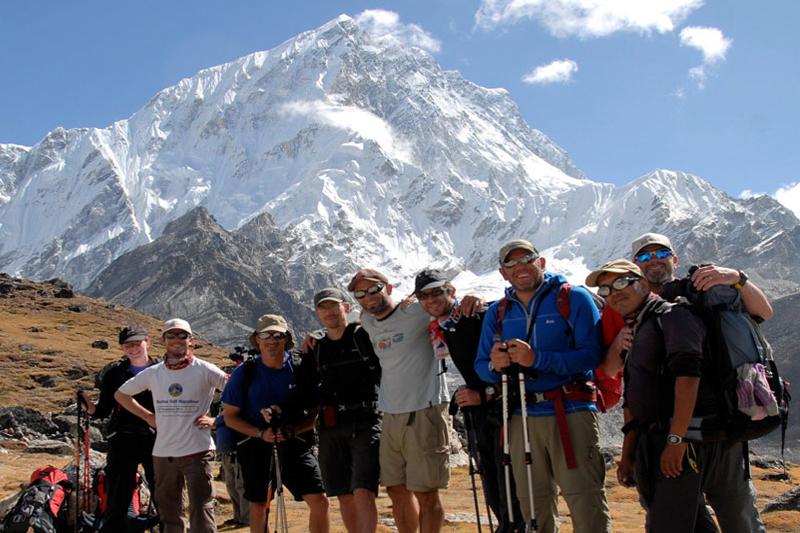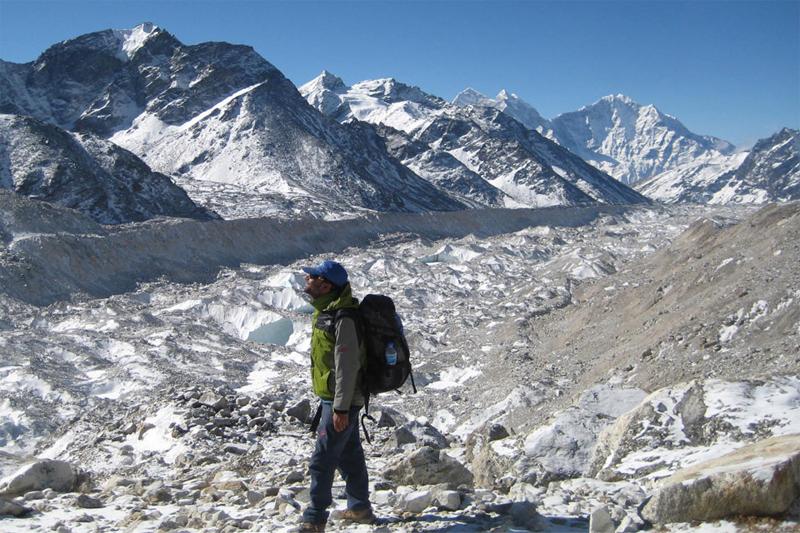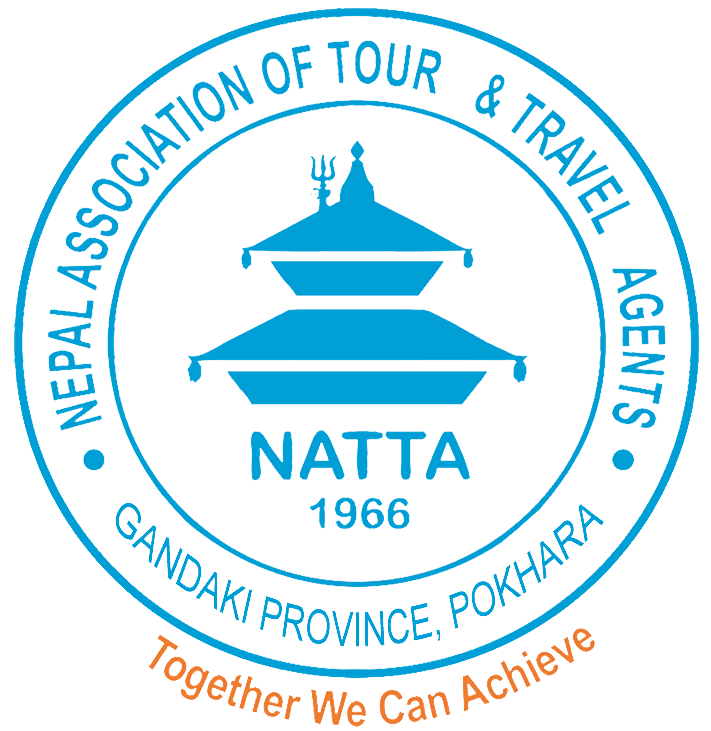Everest Base Camp Trek
Places you will see
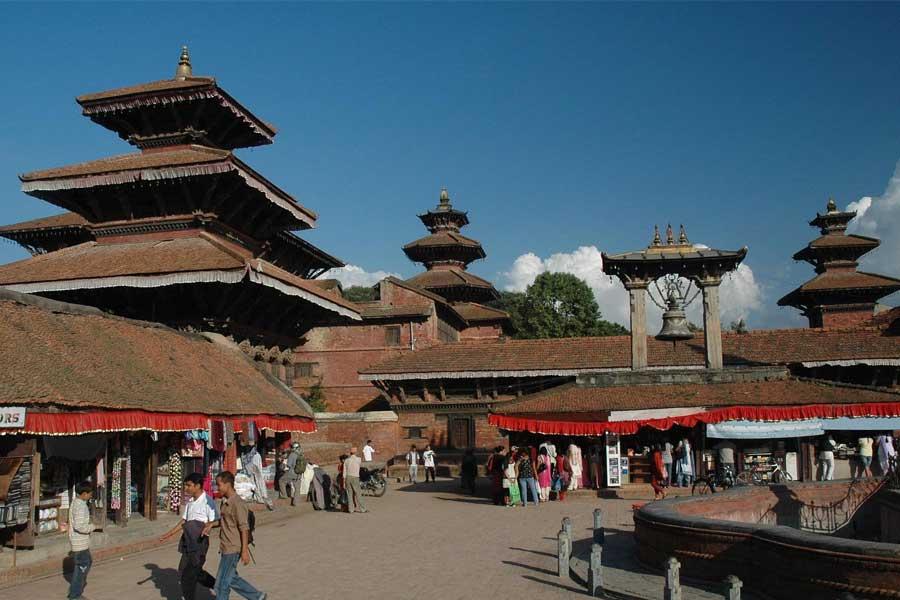
Kathmandu
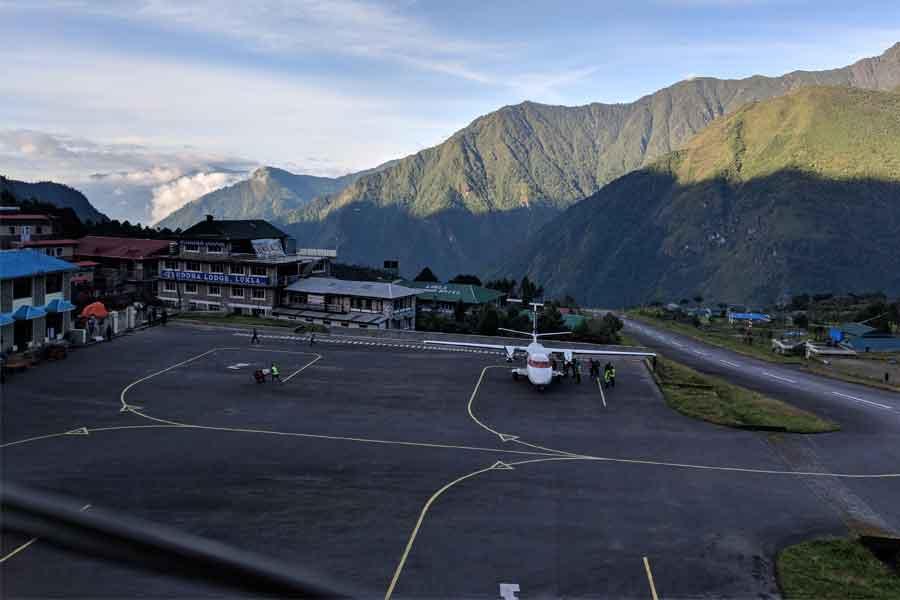
Lukla
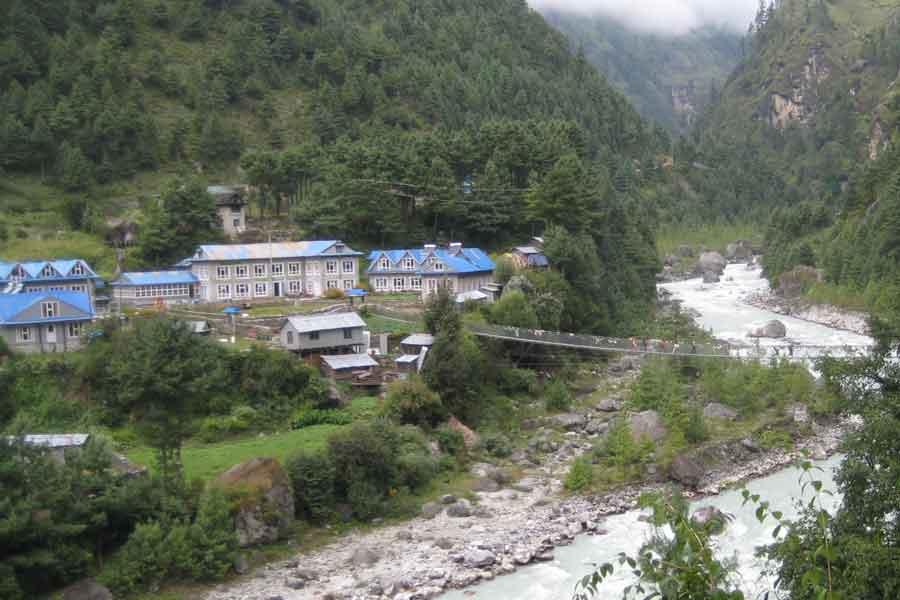
Phakding
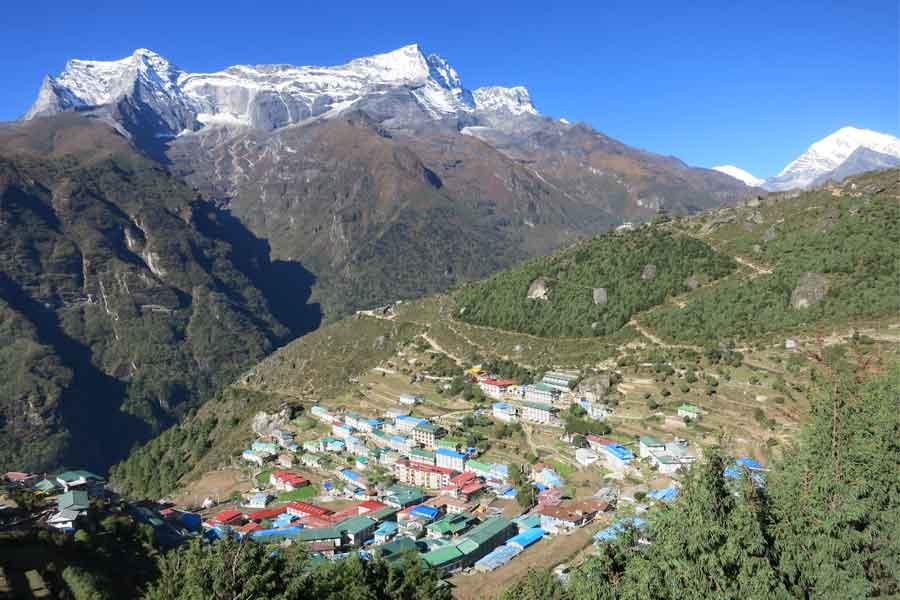
Namche Bazar
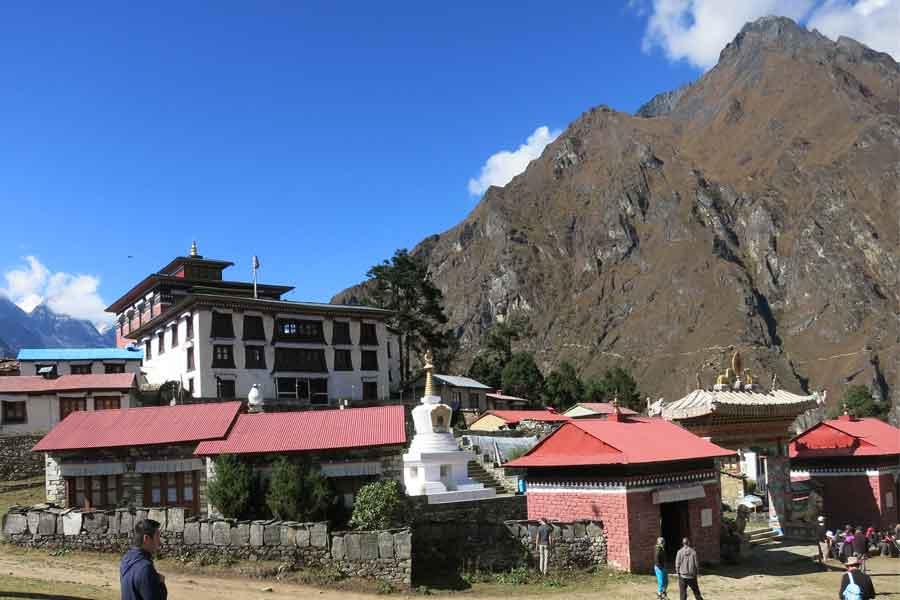
Thyangboche Monastery
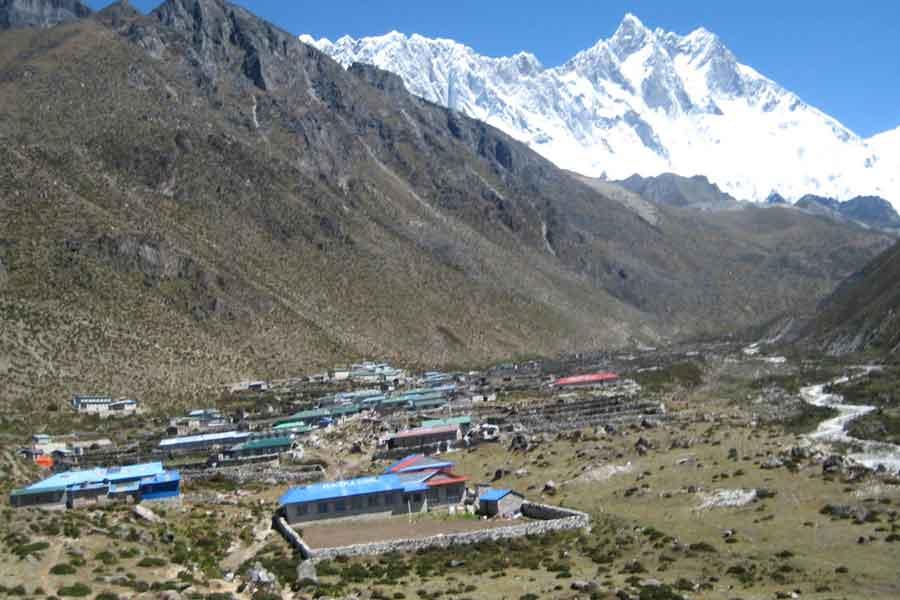
Dingboche
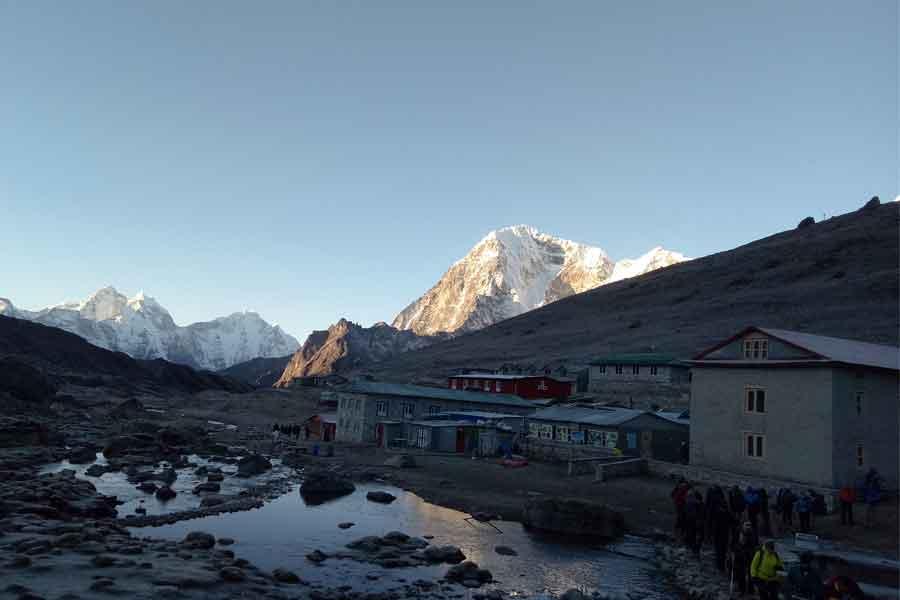
Lobuche

Everest Base Camp
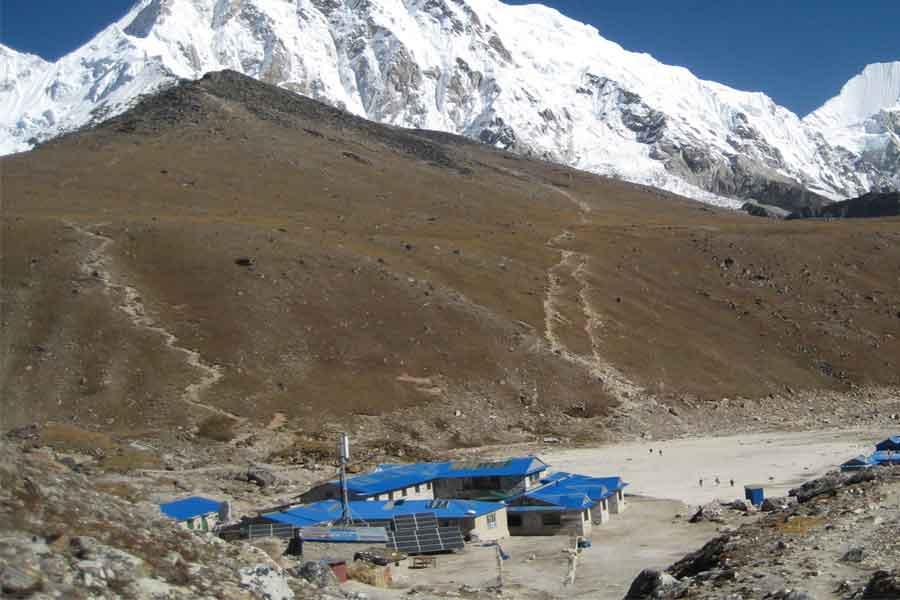
Gorakshep
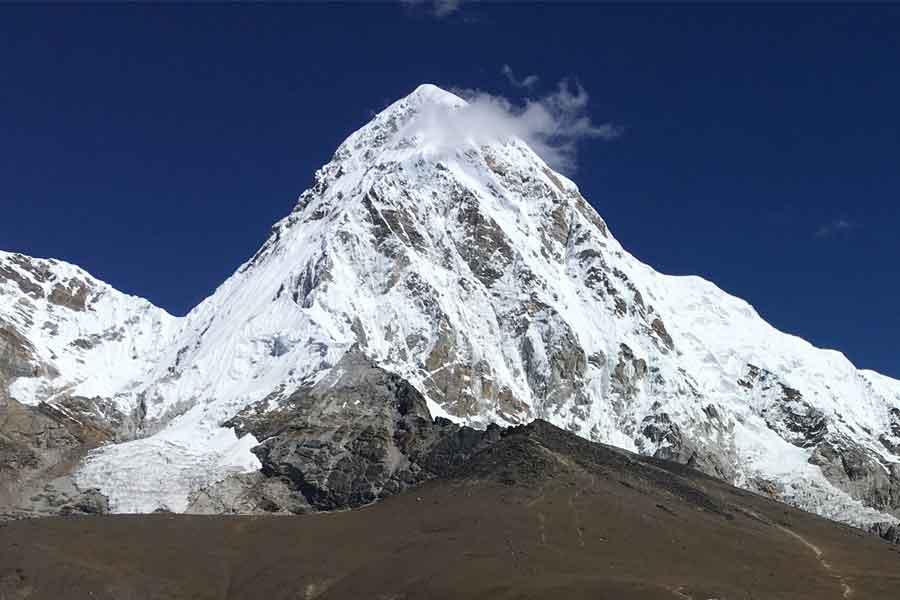
Kala Patthar
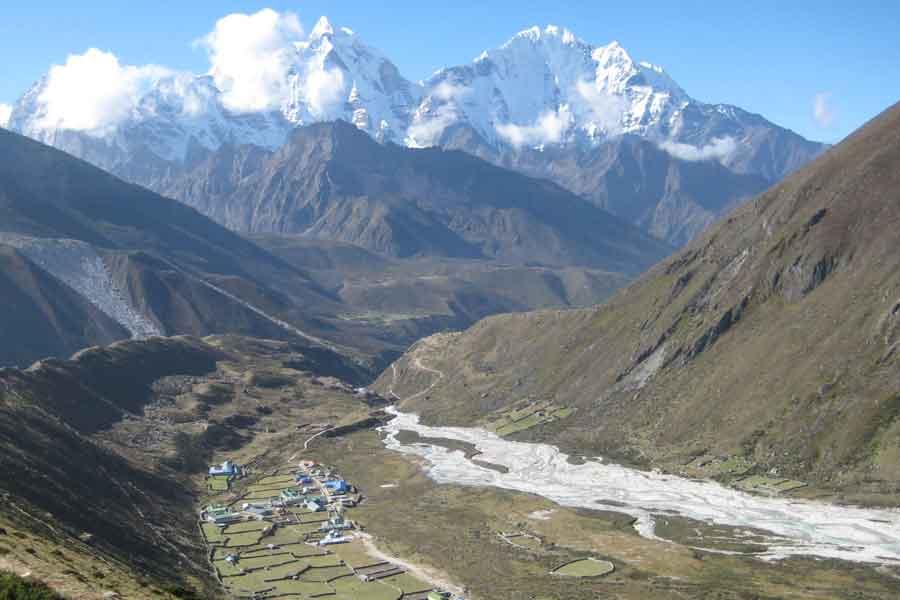
Pheriche
Trip Overview
Trip at a Glance
Everest Base Camp Trek
Everest Base Camp Trek - a perfect trekking adventure for trekking enthusiasts. The trip is one of the world's most popular and wonderful trekking adventures. From the walking trails to surrounding villages and mountains, you will fall in love with everything that you come across. Everest Base Camp Trek – a perfect trekking adventure for trekking enthusiasts.
Trekking in Nepal certainly is an option included on the bucket list of many trekkers, especially Everest Trekking. Every year, there are thousands of visitors travel to Nepal in order to explore and discover the beauty of Nepal. Most of the trekkers head directly towards the base camp of the highest mountain in the world. The average duration of the Everest Base Camp Trek is about 12-14 days to complete.
The trek to Everest Base Camp is a world-renowned trekking adventure that takes you through the stunning Himalayan landscapes of Nepal. The trek is challenging but rewarding which makes you feel heavenly when the mesmerizing views of Mount Everest, Lhotse, Nuptse, and Ama Dablam soothe your eyes. Standing in the shadow of the world's tallest peak is a humbling and awe-inspiring experience that will stay with you for a lifetime. And for those who want even more spectacular views, a hike up to the summit of Kala Patthar provides a panoramic vista of the entire Everest region. Kala Patthar is the higher point of the Everest Base Camp Trek situated at an altitude of 5,550 meters which is why proper acclimatization is essential and important to avoid Altitude sickness.
As said, the trip brings you awesome mountain vistas, pristine surroundings, beautiful villages, and lovely nature. All things that you come across during the trek make your adventure a lifetime experience. The starting and ending of the Everest Base Camp Trek are in the town of Lukla. As soon as the trek starts, it follows the trail of the Dudh Kosi River, passing through lush forests, quaint Sherpa villages, and Buddhist monasteries. Along the way, you'll also encounter suspension bridges, prayer wheels, and colorful prayer flags. The challenging ascents and descents, crossing suspension bridges over deep gorges and ranging rivers give you an enthralling experience in the mountains of the Khumbu Valley. When you see the iconic Khumbu icefall and get a glimpse of the eye-soothing emerald-colored glaciers and glacial lakes, your mind will be blown up. The crispy atmosphere will push you to walk further and further to make yourself warmer and get flattered by gorgeous views.
With the beginning of the spring season, Everest Base Camp Trek bookings rise abruptly. Trekking in the Everest region is the trip of a lifetime and spending an unforgettable time on the lap of the highest mountain on the Earth i.e. Mount Everest aka Sagarmatha (in Nepali) the feat of a lifetime.
Home to the eight highest peaks in the world, no trekkers can keep themselves away from the mesmerizing effect of the mighty Himalayan ranges. The adrenaline rush of adventure lovers and thrill seekers always makes them step onto the Himalayas with the determination to reach the summit.
The enthusiasm for discovering the amazing nature of the exquisite Everest region and the traditional culture, which is untouched by the modernization of the 21st century is appealing.
Here, presenting an organized Everest Base Camp Trek for 14 days is an exclusive offer that takes you to the top of the World. The packages are tailored in different ways such as Solo trek or Group trek (assisted or unassisted). Various agencies are there to provide multiple packages and do the complete documentation required to do the trekking in the Everest region. A hassle-free trekking package to Everest Base Camp is the sole motto of Step on Himalaya so that the valued guests can have a satisfying experience.
Everest Base Camp Trek Highlights
- opportunity to view the world's tallest peak, Mt. Everest
- Scenic flights to Lukla offer breathtaking views of the Himalayan mountain range
- To reach Kalapathar, the most popular and accessible viewpoint in the Everest region
- Exploring Namche Bazar and nearby villages to experience the local cultures of the Sherpa community
- Visiting Tengboche Monastery, one of the oldest monasteries
- Sagarmatha National Park, a UNESCO World Heritage Site, popular for its diverse flora and fauna
- Astounding views of Mt. Everest and adjoining peaks such as Mt. Cho Oyu, Mt. Ama Dablam, Mt. Pumori, Mt. Nuptse, Mt. Lhotse, etc.
- View of the Khumbu Glacier, a stunning icy landscape with towering peaks on either side
- Everest Base Camp is the ultimate destination for the surreal experience of soaring mountains
Everest Base Camp Trek 2023
There are many trekking packages to Everest Base Camp in the year 2023. We have tailored some treks after much research. It is made in a flexible way for any changes in the itinerary due to weather conditions or other unforeseen circumstances. You can choose depending on your physical fitness level, trekking experience, budget, and timings. As an update, the Nepal Tourism Board (NTB) and Trekking Agencies Association of Nepal have announced for banning of solo trekking except for Everest Base Camp Trekking. With proper planning, preparation, and a positive mindset, the Everest Base Camp trek in 2023 can be a truly unforgettable adventure.
Everest Base Camp Trek from Kathmandu
The Everest Base Camp Trek starts in Kathmandu. The trekkers take a flight to Lukla from the domestic airport of Kathmandu. The flight takes about 35 minutes and offers breathtaking views of the Himalayan mountain range. Once you land in Lukla, you'll start trekking toward Phakding, where you'll spend your first night. The actual trek starts from Phakding which leads you toward Everest Base Camp passing through the beautiful villages of Khumbu Valley, ancient monasteries, cross many suspension bridges that let you experience the stunning mountain adventure. You will be staying in the teahouses en route that offer basic accommodation in a cozy atmosphere with limited food menus. For a piece of basic information, the trek to Everest Base Camp takes a minimum of 12 days to complete. It’s always beneficial to be in good shape of fitness to walk up to a higher elevation. The adventure begins as soon as you start walking from Phakding as the roads are rocky and uneven in the rugged mountains. Enjoy the stunning views of beautiful mountains.
Everest Base Camp Trek Length
The length of the Everest Base Camp trek can vary depending on the trekker's pace, itinerary, and route taken. Typically, the trek takes around 12-14 days round trip from Lukla, the starting point for most trekkers. Some trekkers may choose to take a slightly longer or shorter itinerary depending on their preferences, and fitness level and the main is acclimatization. It lets you be prepared for the altitude and challenging terrain of the Everest region.
Short Itinerary for Everest Base Camp Trek
1st Day: Flight to Lukla (2,800m) from Kathmandu and then Trek to Phakding (2,652m)
2nd Day: Phakding (2,652m) to Namche Bazaar (3,440m)
3rd Day: 1st Acclimatization at Namche Bazaar
4th Day: Namche Bazaar to Tengboche (3,860m)
5th Day: Tengboche to Dingboche (4,410m)
6th Day: 2nd Acclimatization at Dingboche
7th Day: Dingboche to Lobuche (4,949m)
8th Day: Lobuche to Everest Base Camp (5,364m) via Gorakshep and back to Gorakshep (5,164m) (You've made it!!)
9th Day: Gorekshep to Kala Patthar (5643m) and trek to Pheriche (4,371m)
10th Day: Pheriche to Namche Bazaar
11th Day: Namche Bazaar to Phakding and Lukla
12th Day: Flight Back to Kathmandu from Lukla
Everest Base Camp Trek Cost
The cost of Everest Base Camp Trek differs if the trek is independent or organized by an agency. It totally depends on the services provided by the trekking agency.
Like, the package for the EBC trek with an international agency will be costing a little higher than that with the local agency. However, the hiring guide and porter also might add up to your package cost. Independent trekking will definitely be low in cost. Solo trekkers can look into Everest Base Camp Budget Trek which is quite feasible.
Expenses during Everest Base Camp Trek
There are some extra expenses during Everest Base Camp Trek such as the internet, hot showers, snacks, bottled water, laundry, an extra blanket, charging electronic devices, etc. If you are a solo trekker, you will be spending on rooms and meals by yourself. If you have hired us, we will take care of accommodation and food during the trekking period as it is included in the package of Everest Base Camp Trek. The prices in the Everest Base Camp route will surely be higher than the normal rates and it gets higher as you rise up. Also, it's customary to tip the trekking staff, such as guides and porters, at the end of the trek. Overall, the estimated budget for Everest Base Camp Trek for 14 days would be an average of 30$ to 50$ per day for food, drinks, and accommodation. But the expense might be higher if you spend more on snacks, hot showers, laundry, etc.
Best time for Everest Base Camp Trek
March to May and mid-September to December are considered the best time to visit. During these mentioned months, the skies are crystal clear most of the time which is the best part during the trekking as the views of the snowy peaks are mind-blowing. Trekkers can witness the beautiful rhododendron flowers in bloom along the trekking trail and also can participate in the traditional festivals of the Sherpa community during these seasons.
However, some trekkers choose to do the trek during the months of June to August, even though there are frequent rain showers and cloudy skies obstructing the mountain views. The reason might be probably the less crowded tails and the scenery can be lush and green.
Meanwhile, the months of December to February let you enjoy the chilling and crispy weather of the Everest region. The skies are generally clear and the mountain views can be mesmerizing and snowfalls might occur making the climate colder.
Ways to reach Everest Base Camp
Everest Base Camp is one of the most famous trekking routes in the world. Likewise, there are options on how to choose to do the trekking to Everest Base Camp. Walking is a major part of trekking. The standard route is one can take a flight to Lukla and then walk ahead towards the destination which is the Everest Base Camp Trek, a package designed for 14 days. The other choice is the classical trail through Jiri. This is the longest route.
The expensive and shortest but most exciting alternative is a Helicopter tour to Everest Base Camp. Helicopter tours are available for those who want to reach Everest Base Camp quickly and easily. There are many modified packages for helicopter tours to Everest Base Camp depending upon the initial point for take-off and final point for landing. The regular helicopter tour from Kathmandu to Everest Base Camp takes around 3-4 hours round trip with a short stop for acclimatization at a higher altitude. The helicopter tour offers stunning views of the snowy mountains of the Khumbu region. This option sounds great option for those with limited time or physical limitations and still want to reach the Everest Base Camp.
Independent or Assisted Everest Base Camp Trek
There is always a question about going solo trek trip to Everest Base Camp or in a group. It is actually possible to go independently to EBC but if you are a stranger to the place, it is always better to ask for assistance through trekking agencies. The main benefit of the hiring agency is safety together with the accomplishment of all the necessary documentation required for trekking to Everest Base Camp. Accommodation and meals will be arranged by the trekking guide. Porters will help you carry the luggage.
If you want a solo trek, you will be spending a day or two on the paperwork. You have to book the flight or bus or jeep for land transportation by yourself. There is a chance of being misguided if you do not know the place. The language barrier can be an issue in the mountains. Self-trekking is possible and recommended to those who already know the mountains, the rugged pathways, and the unexpected alterations in the climate or weather of the mountains.
If you join a group, the cost might be cut down to some extent and can be more entertaining than walking alone. If you end up getting sick in the mountains, you will really appreciate the trekking guide or the company that you are with.
More Information about Everest Base Camp Trek
FAQs About Everest Base Camp Trek You Need to Know
Everest Base Camp Trek Route on Google Maps
How to Reach the Everest Base Camp
Video
Detail Itinerary
Note: The trekking times are approximately set as per the general guidelines. It is always recommended to arrive at least one day prior to your scheduled trekking which will allow you to get introduced to the trekking team and know about the planned activities during the trekking days. Please keep an extra day or two at the end of the trekking itinerary as the weather is unpredictable in the mountains. This will allow you to catch up with the flexible schedule of Lukla flights to Kathmandu, just in case of delay.
Is the proposed itinerary suitable for you?
If you are looking for a custom itinerary, please feel free to reach out to our team of professionals at any time.Trip Map

Cost Details
What is included?
- Ground transportation for pick up and drop at Airport
- 2 Night Hotel accommodation in Kathmandu and twin-sharing accommodation in teahouses during trekking
- 3 meals (Breakfast, Lunch, Dinner) during the trekking @

- A round-trip ticket to Kathmandu and Lukla
- All the Trekking permits and TIMS
- All the local and government taxes
- An experienced English-speaking Government Licensed Guide, 1 assistant trek guide for (more than 6 trekkers), and a porter to carry your luggage { 2 trekkers:1 porter (can't carry more than 24kg) } including their food, lodging, salary, and Insurance.
- Step on Himalaya T-shirt
- Farewell Dinner
What is not included?
- Nepal entry Visa fee
- Personal expenses like beverages, bar bills, electricity, hot showers, etc.
- Travel and Medical Insurance
- International Airfare
- Lunch and Dinner during Kathmandu stay
- Tips and Gratuities to the staff
- Emergency evacuation due to mishaps, calamities, or health emergencies
- Accommodation for the extra stay in Kathmandu if due to early arrival or delayed departure, or early return from the trekking, etc.
- Anything not mentioned in the “INCLUDED” section
Trip Info
Weather / Climate during Everest Base Camp Trek
The weather and climate on the Everest Base Camp trek can vary greatly depending on the season and altitude. Everest Base Camp trekking can opt at any time of the year, however, Spring and Autumn's seasons are considered the best. The temperature during the season ranges from 15°C to 20°C during the day and 0°C to -10°C at night. The skies are clear, and the mountain views are stunning.
Likewise, the Monsoon season gives you muddy, slippery roads, and the views are almost always covered with clouds. So, it is better to avoid the trek during the rainy season. The weather is dry and clear and the temperature also ranges similarly to Spring or Autumn season.
Meanwhile, the normal temperature during the winter season usually ranges from -5°C to 5°C during the day and -20°C to -10°C at night. This is the coldest time of the year in the Everest region with very cold temperatures and occasional snowfall.
Alterations in weather are always expected. There are downpours sometimes during a perfect sunny day too. So you have to be ready with raincoats and warm clothes.
Everest Base Camp Trek Accommodation
Accommodation during the 14 days of Everest Base Camp can vary from the basic teahouses to more luxurious lodges depending upon your comfort and budget.
Teahouses are basic lodges that offer budget accommodation along the entire trekking route. It is usually a twin-sharing room with a simple bed, a communal bathroom, and a common dining area. There might not be hot water facilities in every room. Such teahouses are available in every village of the Everest region and quite easy to get the rooms except in the peak season.
The next option is guesthouses which are slightly more comfortable than the teahouses compared with private rooms and attached bathrooms. They do offer common dining areas and some basic amenities such as electricity, hot water, wardrobe, etc. Guesthouses are more expensive than teahouses and offer more privacy and comfort.
A luxurious option is the luxury lodges where trekkers are offered luxurious accommodation with amenities like hot shows, western-style toilets, more comfy beds, and heating systems with satellite TV or internet access in the room.
The concept of choosing accommodation depends on the season as well as the location of the accommodation during the trek. During the peak seasons, it is always recommended to book accommodation in advance to ensure availability or stay in the rooms when available, which is why it is better to be prepared for basic facilities and pack appropriately for the trek to the Everest Base Camp.
Food during Everest Base Camp Trek
During the Everest Base Camp Trek, the food options will vary depending on the teahouses or lodge that you stay at. Also, it depends upon the location where you are staying. However, most teahouses along the trekking route to Everest Base Camp offer a variety of food options ranging from traditional Nepali authentic cuisines to continental dishes. Some popular Nepali dishes are dal bhat (rice with lentil soups), vegetable curry, momos (dumplings), Thukpa (noodle soup), Chowmein (stir-fried noodles), etc. There are breakfast options such as porridge, toast, eggs, and pancakes with coffee, tea, or hot chocolate that help you warm up during the cold mornings. It is always important to take note that the food options get limited as you go up higher and higher in the trekking route of Everest Base Camp. The reason is the difficulty of transportation and availability of fresh vegetables, meat, or any other ingredients. That is why, it is recommended to avoid meat food items during the trek.
To Hire Guides and Porters or not on Everest Base Camp Trek
Assistance is always a boon. Trekking alone is sometimes risky as the place is unknown and the communication barrier might be a halt while trekking to Everest Base Camp. Trekking guides are well-experienced, English-speaking, and can handle critical situations. Most of the locals running restaurants, lodges, guest houses, and tea houses along the porters know English very well but sometimes a misunderstanding can create an issue. Hiring trekking guides and porters actually help in the trekking experience and dealing with any problems. It is just you have to bear their expenses and the insurance once you employ them. A porter can carry 25 kgs maximum for two persons. Never forget that trekking guides are the best navigators for you if you are not familiar with the area. Sometimes, they do find the best routes and avoid getting lost. A guide always can help ensure your safety by providing information on the trekking trail, weather conditions, and potential risks. They are perfectly fit and trained to handle any kind of emergency situation in the mountains.
Fitness for Everest Base Camp Trek
The Everest Base Camp trek is a challenging trek that requires a good level of fitness and preparation. As the trekkers will be hiking to higher elevations, often over rough and steep terrain, it is recommended to stay in shape with daily exercise and maintain your stamina to be able to cope with long days of hiking. Basic startup to build your fitness gradually which will be at least 3-4 months before the trekking. Cardiovascular exercises such as running, cycling, or swimming can help build up endurance and stamina. Exercises like lunges, squats, and step-ups help you build the strength of your leg muscles which is quite important for trekking. Hiking by carrying a backpack with gear and supplies during the trek is also important. Always keep in mind, a healthy and balanced diet is the source of energy. Plenty of fruits, and vegetables, and avoiding processed and high-fat foods are to be the focus along the trekking. And if you have any pre-existing health conditions or concerns, always consult the doctor before starting any new exercise or trek.
Tips before starting Everest Base Camp Trek
Everest Base Camp Trek is a challenging as well as intriguing trek in the beautiful Khumbu valley. One has to be physically and mentally prepared before initiating this trek to Everest Base Camp like it's a meditation, not an expedition. It is not that hard compared to climbing Everest to the summit but it's not even easy at all. Some bits of advice when followed may make the Everest Base Camp Trek comparatively easier and comfy.??
-
Always train well enough to make yourself physically fit. Running is one of the best exercises to increase your stamina to cover an average distance of 8 km every day at a normal pace. Running on an open road is just better and start at least 30 to 40 days before going trekking
-
Another important factor is Avoid Smoking and consumption of alcohol. These two things decrease your potential to acclimatize. Smoking reduces oxygen intake in the blood which ultimately results in poor breathing and makes it difficult in the mountains. Alcohol causes dehydration as it interferes with the ability to retain water in the body. A piece of information is that alcohol stays in the bloodstream for about 1 month so it is better to stop smoking and alcohol intake at least 1 month before starting the trek to Everest Base Camp.
-
A balanced Diet is essential and more significant when you are in the mountains. The mountains are difficult to access at any time like in towns which is why fresh food items are somewhat difficult but the teahouses and lodges serving food make sure of freshness and maintain hygiene. Eating well and eating in light amounts help you maintain your body in good health and good shape as well. Avoid any fatty or oily foods and do not take excessive salt. Encourage your hydration level and as much as possible, take vegetables and fruits. Avoid meat products as it is quite difficult to digest. Eggs are good to include in daily breakfast.
-
Prepare with a first aid kit. The guide always has a first aid kit with essential medicines which might be required in the mountains but it is always advisable to take medicines of your own and also better to take with the consultation of a doctor. Acetazolamide is one of the essential medicines which might be needed to prevent Altitude sickness but please follow the instructions of the doctor.
-
Always keep yourself warm. Hypothermia is a condition where the body temperature is less than the normal temperature which ranges from 97°F (36.1°C) to 99°F (37.2°C). Woolen clothes with mittens/gloves and socks, scarves, hats or caps, or head gears to maintain the warmth of the body.
Packing for Everest Base Camp Trek
Always be prepared as the temperature is freezing cold (sub-zero) as you go up towards the Base camp. Lightweight clothes, essential items, and required documents should be carried along with the Trekking. A duffle bag will be a better option for packing all the necessary items like clothes, shoes, socks, toiletries, chargers, binoculars, cameras, etc. Passports and other essential documents are safe to keep in a belt bag or personal backpack. Basic medicines and a first aid kit are also useful.
- Trekking pants (Avoid jeans or pants)
- Full sleeves shirts
- Windcheater and raincoats
- Down jackets, fleece jackets
- Cotton and woolen socks
- Woolen gloves or mittens, waterproof
- Hat or cap or beanies
- Trekking shoes
- Sunglasses
- Trekking poles
- Toilet paper rolls, wet and dry tissues
- Sanitary pads or tampons (for female trekkers)
- Sanitizer
- Anti-bacterial and Anti-fungal cream or foot powder
- Moisturizer – Vaseline lotion or petroleum jelly recommended
- Sleeping bags
- Documents such as Passport, Medical and Travel Insurance, Permits, etc.
Permits for Everest Base Camp Trek
Everest Base Camp Trek is one of the popular tourist hubs. Permits to explore the region are a must. There are several permits and a bunch of paperwork to clear to get those permits to trek in the Everest region. Initially, TIMS (Trekkers' Information Management Systems) was only required but this is now optional. There are three other essential permits for Everest Base Camp Trek which were made compulsory after the new decentralized system. Those permits are for the Khumbu Pasang Lhamu Rural area, Sagarmatha National Park, and the Gaurishankar Conservation area. To remind of, the permit for the Gaurishankar Conservation area is only required if you are taking the classical route through Jiri to Everest Base Camp Trek.
Carrying all the primary identification proofs like passport, Identity card, Visa, etc. is just as they are regularly checked at the checkpoints and sometimes you have to fill up some forms for identification purposes. In conclusion, there are two main permits required for the Everest Base Camp trek:
1. Sagarmatha National Park Permit: The Sagarmatha National Park is a protected area where Mount Everest is located. Every trekker must obtain a Sagarmatha National Park Permit which costs around NPR 3,000 (approximately USD 30) per person. You can obtain this permit in Kathmandu or in Monjo, the entry point to the national park.
2. TIMS Card: TIMS (Trekkers' Information Management System) is a database created by the Nepal Tourism Board to keep track of trekkers' information and ensure their safety. All trekkers, including those going to Everest Base Camp, need to obtain a TIMS card which costs around NPR 2,000 (approximately USD 20) per person. You can obtain a TIMS card in Kathmandu or at the trekking permit counter in Monjo.
Do not worry, Step on Himalaya will take care of the permit process. You just have to make sure to carry your permits during the entire trek as these permits are checked at various points along the trekking route to Everest Base Camp.
Insurances while on Everest Base Camp Trek
Medical Insurance is a must for travelers. Wherever you go, it is always beneficial. God forbid you mustn't feel ill during the trip but if ever you will, medical insurance means a lot at that time of crisis. Medical insurance is always crucial for any trekker as the Everest Base Camp trek involves high altitude and can be physically demanding. Emergency Evacuation will be required by helicopter due to a lack of proper land transportation in the mountains. Read the Insurance policy in detail before buying it. Make sure your insurance covers medical expenses, evacuation, and repatriation in case of an emergency. Also check if the insurance covers the loss of equipment or gear, trip cancellation, or delays during the trekking to Everest Base Camp. Always remember to keep a copy of your insurance policy with you during the trek and make sure to inform your insurance provider of your travel plans.
Prevention of Altitude Mountain Sickness (AMS)
The basic definition of Altitude Mountain Sickness is the condition caused by rapid exposure to a low amount of oxygen at high elevations. The usual symptoms of AMS are headache, vomiting, fatigue, trouble sleeping, drowsiness, and dizziness. It is very common during the Everest Base Camp Trekking as some of the trekkers do not wait for acclimatization and try to attain higher elevations quickly. This gives the negative effect of the inability to breathe adequately as the amount of oxygen gets less as you go up high. One must climb slower and if any symptoms are seen, you must wait until you be able to walk further without any health issues. This is the key to preventing AMS and advisable not to climb more than 300-500 meters per day once you are above 3000 meters. Acclimatization for a day or two is a must during trekking to Everest Base Camp. The stop-by for acclimatization for Everest Trekking is mostly Namche and Dingboche. Hydration is a must. Stay hydrated. Carry a water bottle with you. Eating a balanced diet as well with small frequent meals instead of heavy meals. Do carry some medications such as acetazolamide, which is the best medicine to prevent AMS, but should be taken with a doctor's guidance. Enough rest and adequate sleep. Keep yourself warm to avoid hypothermia. Do not ignore and push yourself for further trekking if you have any of the symptoms of AMS. Always know your body limits.
Go through the Complete List of Equipment and Gears during Everest Base Camp Trekking.
FAQ
Everest Base Camp Trek is categorized as Moderate, Adventurous, and Challenging/Strenuous.
There are different types of packages for Everest Base Camp Trekking. Depending upon the trekking you choose, the duration varies from 12 days to 22 days.
It totally depends upon your fitness level. If you are able to walk 5 to 6 hours daily, you can attempt the Everest Base Camp trekking. The duration of the trekking also matters.
The temperature varies as per the season of the year. It also depends upon the alterations in the elevations. It is from 5° C to 20° C normally in the morning during the months of April to September. While from the month of October to March, the temperature might fall below a minimum of - 10° C to a maximum of 15° C during the day time. It is usually cold in the night time.
The higher you go, the more change in the climate. There are abrupt changes in the weather at the Base Camp on Everest.
The best season to trek to Everest Base Camp is Spring during the months of March to May. The post-monsoon fall (September to November) is also considered to be the better season while Winter(December, January, February) is colder and rain might halt the trek during Summer or Monsoon (June to August) season.
The shortest and most convenient route is via Lukla. But there are various routes to reach Everest Base Camp. The route via Jiri is the oldest one. Another route is from Arun valley in Eastern Nepal, from the Makalu area passing through 2 high passes, from Rolwaling crossing the Tashi Labtsa high pass, etc.
The cost depends on what type of selected package. There are various types of packages to Everest Base Camp like 14 days-Everest Base Camp Trek, Everest Luxury Trek, Short Everest Trek, Everest Base Camp Budget Trek, Everest Three High Passes Trek, etc. For example, all the facilities are arranged in the five-star level to a possible extent in Everest Luxury Trek while there are some limitations in Everest Base Camp Budget Trek. In Budget Trek, you have to hire a porter with an additional cost, arrange the accommodation and meals in Kathmandu by yourself, etc.
No, there isn’t any age bar or limit for trekking to Everest Base Camp. But it is always essential that the trekker be in good shape of fitness and possess an optimistic attitude.
A trekker has to walk a minimum of 5 to 8 hours daily.
As a Himalayan trekking adventure, you will trek through mountainous landscape. Walking up and down the hill during the trek is quite common characteristic of trekking in Nepal.
Yes, definitely. Elevation change is an important part of the trek. As there is a lot of walking up and down the hill, there is an elevation change every day. However, the range of change differs from day to day. It is mostly an uphill trek up to the destination and downhill on the way back. However, the trail winds up and down the mountains throughout the trek regardless of the elevation difference for the day.
Nepal offers trekking adventures throughout the year. However, the autumn and springs seasons are the best seasons to go trekking in Nepal. The months of September-November and March to May offer the best weather and atmosphere for trekking. Althgouh high altitude trekking is quite difficult and impossible in winter season, low altitude trekking can be done throughout the year.
Many people confuse trekking with climbing while these are completely different activities. Trekking is a walking activity in the mountains below snowline while climbing goes way above snowline to the top of a mountain. Trekking is much easier than climbing because you need to learn technical skills to climb a mountains.
Although age is not a bar to go on a trekking adventure in Nepal, you certainly need to consider a few factors before going on a trek. The basic requirement for trekking in Nepal is good fitness level regardless of your age. Since the activity involves a lot of walking up and down the mountains, you need to be fit enough to indulge in the activity for multiple days.
We highly recommend taking a guide with you when you go on the trekking adventure. Even if the trail is well-trodden and has many trekkers trekking, you need to have a guide for many reasons. First of all, a guide is not only the person to show you the trail. A trekking guide has a huge responsibilty of completing the adventure ensuring the safety of trekkers in the strange mountains. Moreover, the guide will also make your trip more than an adventure. It becomes a lifetime experience.
The mountains now have basic teahouse and lodge accommodations for trekkers. You can spend overnight in the warmth of guesthouses called teahouses during the trek unlike tented camps in the past.
The most common food during the trek is Dal Bhat. However, you can choose other food items from the menu. The food items differ from region to region.
You need to prepare your stuff wisely for the trek. The backpack you get ready for the trek should have all essentials and avoid any unnecessary stuff in there. Check this equipment list for a better understanding of what to pack for the trek.
As a high altitude trekking adventure, the trek always has a risk of getting altitude sickness. While it is not predictable who, where, and how they will get it, we all need to be well-aware and prepared for the unwanted. As we gain altitude during the trek, we should be more careful on our pace of walk, food, water, rest, and recovery. Being careful and taking it easy in the mountains can reduce the chance of getting altitude sickness.
Yes, permits are necessary for the trek. Since, you are going on our package, we take care of everything. You do not need to worry about arranging the permit for yourself.
When you are on our trek package, we provide porters to carry your backpack in the mountains. A porter carries the backpacks of two trekkers.You suggest you to keep your backpack around 10 kg.
Yes, you will need some cash in the mountain. Although your major meals are included in our package, you may need money for drinks, shower, souvenir shopping, wifi, device charging, and tips to guide and porters at the end of the trip.
We will brief you on how much to take on the first day of the trip when we meet in Kathmandu.
We focus on small group adventures to ensure that every one is well-taken care of and they enjoy the trek. We keep our group to the maximum limit of 16 people.
In that unfortunate case, we will make sure that you are well taken care of. If you cannot continue your journey further towards the destination and want to rest or return back, we will arrange a porter to be with you and take care of you while rest of the group members continue the trek.
Review

Thought of Everest Base Camp Trek; took a chance with Step on Himalaya and turned out to be a golden experience... Excellent and customized package to Everest Base Camp. Hari takes care of clients' safety first. I Recommend him strongly.

“ I have done Annapurna Base Camp Trekking and other treks with Hari and his team of Step on Himalaya. I was not expecting to reach the Everest Base Camp though I chose it. But the trek went so smooth with Hari that the trekking was so incredible and awesome. Rocking experience. I want to greatly recommend Step On Himalaya to be your guide. SOH is a friend in the form of a Trekking agency."

Hari is the perfect guide who is very knowledgeable and organized in his works. It was a wonderful time with him to trek to Everest Base Camp. Clear transactions with a well-programmed package to Everest Base Camp. Highly recommend making special memories in Nepal.

Whenever I visit Nepal, Hari is always my guide. 5 years ago, I visited Nepal for Everest Base Camp Trekking and as always, Hari guided me with his wonderful experience. More importantly, he accommodated my style. He was strict and fun at the appropriate times. For this, the memory of those days up in the mountains with Hari and the mini-victory party we had at Lukla will forever have a special place in my heart. We drank the pub dry. 5 years have passed since, but I know for sure I will revisit. I cannot wait to stand amongst the mountains again and to reconnect with my buddy Hari from Step on Himalaya.

Hari is simply the best you can expect, and I mean it from my heart. He was very kind, cheerful, and friendly all the way to the Everest Base Camp and on the way back. But the moment of proof of his excellence came when we were stuck due to heavy fog: the planes couldn't fly in such conditions, he tried his best to secure helicopter's seats as early as possible while many others like us were still waiting to get seats. During that process, we just shared a rough lodge's small room he got us into, just like friends. And he and I are now indeed friends.. Thanks to his amazing hospitality and quick managing capability. I guarantee you that you will get the most out of your Himalayan experience when with Hari and his company Step on Himalaya :)

Just finished an Everest Base Camp Trek with Hari over the course of 10 days. Nepal is magical and the Everest Base Camp hike is indescribable. Going with Hari was kind of relaxing as our group already knew we would be taken care of from the first day and he handled all the logistics. Every detail was taken care of!
During the trek, Hari kept an eye on all the members of the group and was always available to answer questions about where, how far, or how high up we were going. He stayed completely on top of our health, always asking how we were doing and had all the necessary medicines when a few folks experienced slight colds and tummy troubles. Thanks to his preparedness we all had a safe and healthy journey!
It was also a blast to hang out with Hari in the evenings enjoying dinner and a fun game of cards. If you are going to this Khumbu region, make sure you go with Hari and Step on Himalaya. Such a treat and couldn't have imagined a better trip! Highly recommended and assured for the utmost flexibility trekking package.

Everest Base Camp Trek with Step on Himalaya was really a good choice for us. Hari was our trekking guide, we named Hari as the mountain goat as he was climbing the mountains so comfortably. Also, he was all the time happy with full energy and an everlasting smile. This made us active and let us enjoy the mesmerizing views. Has all the qualities to be a trekking leader and wish to do many more programs in the future with Step on Himalaya and of course, with Hari.
Trekking to Everest Base Camp was awesome with SOH. Go for it !!!
Everest Base Camp Trek is one of the most exciting and challenging treks. Choosing it was always a determination. Thanks to Step on Himalaya team, especially Hari, he managed everything so well that we just walk and walk. We never worried about stay or food during the whole trek. It was arranged on time without any complaints. The trek went so smoothly with Hari, the 14 days just passed by. Trekking to Everest Base Camp was really tiring but the evening talks with the coffee with Hari were so relieving and mind-relaxing. He always prompted us to go further but with much care for our health as well. He carried a first aid box with all the necessary medicines that probably will be needed in the higher mountains. Always keep in mind acclimatization. Maintained the pace and made sure everyone is in fit shape. It was really a great time doing Everest Base Camp Trekking and that is all because it was thoroughly organized. A great chance to visit Everest, take it thru Step on Himalaya. I assure you their services are 5 stars and you will never regret choosing them as your guide in Nepal. You will be satisfied and mainly glad for your choice, Step on Himalaya rocks !!!
Unforgettable memory of Everest Base Camp Trekking
Unforgettable service rating 5 stars to Step on Himalaya. It was such a beautiful experience doing Everest Base Camp with Arjun, our trekking guide. We are so glad to do this trek. The timing was perfect, the weather was so supportive, clear and superb views of Himalayas. Worthy stay with good Nepali foods and most of all, the travel was so hassle-free. We didn't worry about anything for the entire 14days trek, stay was managed properly, taken care of emergency medicines and importantly no rush to suit our pace. This is life long memorable trek to Everest Base Camp and one of the best trekking experiences in Nepal. Once again, very satisfied to choose Step on Himalaya. Highly recommended to my fellows and families in India. Go for it when planning to visit Nepal.
